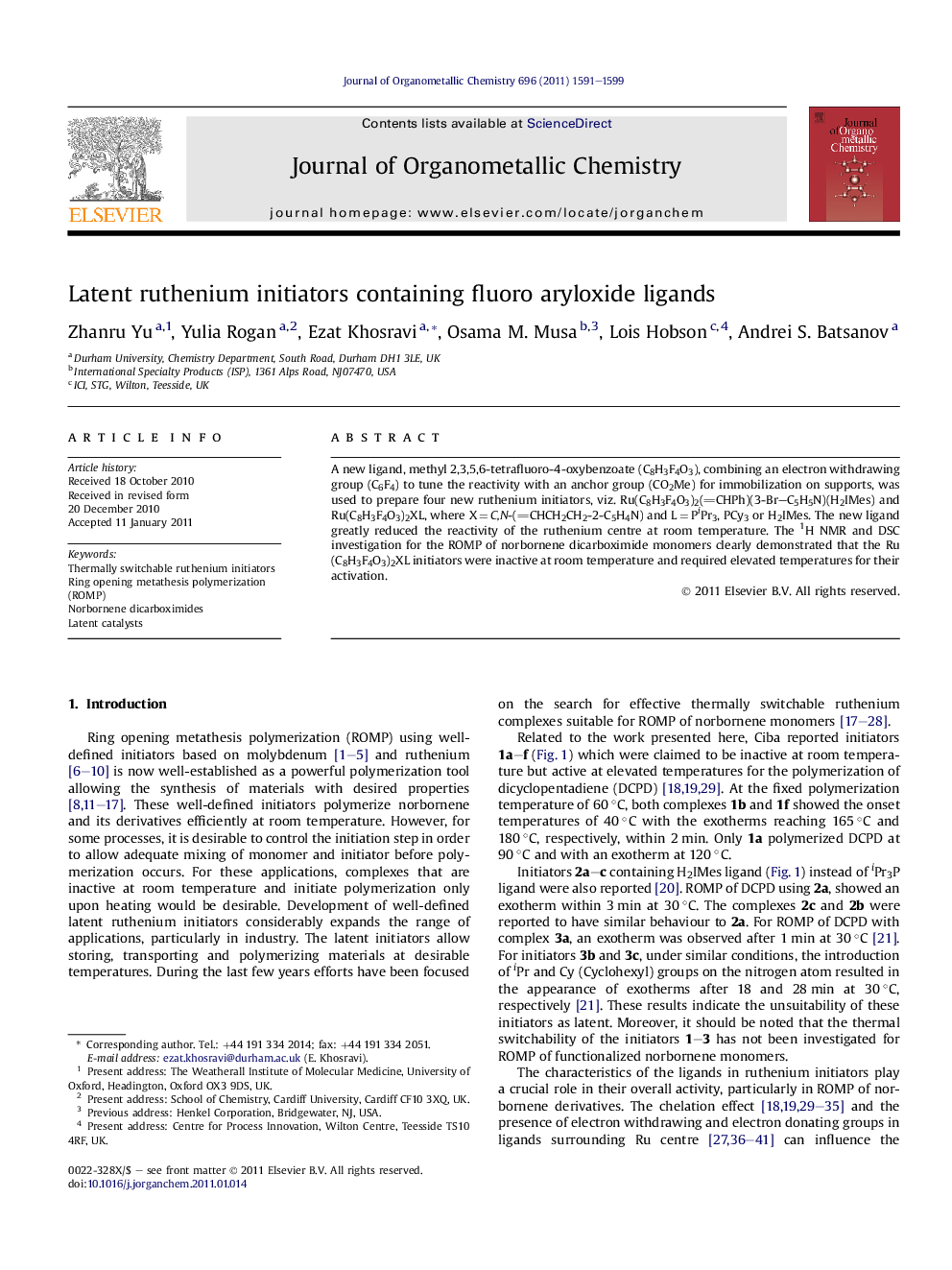| Article ID | Journal | Published Year | Pages | File Type |
|---|---|---|---|---|
| 1322346 | Journal of Organometallic Chemistry | 2011 | 9 Pages |
A new ligand, methyl 2,3,5,6-tetrafluoro-4-oxybenzoate (C8H3F4O3), combining an electron withdrawing group (C6F4) to tune the reactivity with an anchor group (CO2Me) for immobilization on supports, was used to prepare four new ruthenium initiators, viz. Ru(C8H3F4O3)2(CHPh)(3-Br–C5H5N)(H2IMes) and Ru(C8H3F4O3)2XL, where X = C,N-(CHCH2CH2-2-C5H4N) and L = PiPr3, PCy3 or H2IMes. The new ligand greatly reduced the reactivity of the ruthenium centre at room temperature. The 1H NMR and DSC investigation for the ROMP of norbornene dicarboximide monomers clearly demonstrated that the Ru(C8H3F4O3)2XL initiators were inactive at room temperature and required elevated temperatures for their activation.
Graphical abstractFigure optionsDownload full-size imageDownload as PowerPoint slideHighlights► New ligand 6 was synthesized with an electron withdrawing (–C6F4) and anchor (–CO2Me) groups. ► A new range of ruthenium initiators 7–10 were prepared bearing the new ligand 6. ► The reactivity and thermal switchability of ruthenium initiators 7–10 were investigated for ROMP. ► Initiators 7–8 were inactive at room temperature but active at elevated temperature for ROMP. ► Inactivation is due to the increased strength of chelation upon the inclusion of ligand 6.
